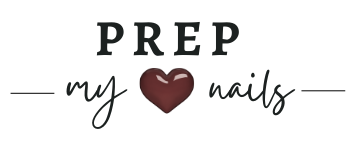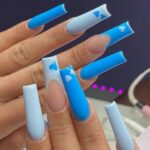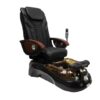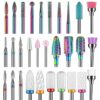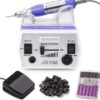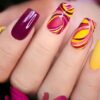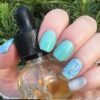A nail primer helps prepare the nail before applying a gel or acrylic manicure. If you want the base coat to stay on, you’ll need to wipe up the oil and grease from your nails. Nail primers are available in a range of shapes and sizes. Some include acids, whereas others do not.
However, a high-quality priming bottle may be rather costly. Furthermore, many primers include chemicals that can irritate the skin, and continuous usage can wear down the nail plate over time. Fortunately, there are a variety of chemicals that you can use in place of primers. Additionally, these options may be utilized with any nail system, including acrylics, gel, etc. But first, take a look at why you need to use nail primers.
Basics Of Nail Primer
The most common form of nail primer is an acid-free one. However, you may use nail primers to make microscopic fissures and cracks in your fingernail plates so that acrylics and polishes adhere better, but you should always care for your nails. Acid primers and acid-free primers are two different kinds of primers.
Avoiding a Nail Primer:
Having the appropriate foundation shade will help you look great, but the effect won’t be as beautiful if you don’t apply primer to your face first. It holds for nail paints as well. When you consider it, nail primers function as a double-sided adhesive for nail paints. The thin layer adheres to the nails fast after application, acting as an adhesive between the nail’s surface and the polish or acrylics.
The Fascinating Yet Damaging Work Of a Nail Primer
The bonding process of other primers is entirely different. Rather than functioning as glue, they produce tiny holes on the nail’s surface and then soak into all those holes to build strong attachments. The topcoat adheres to the fingernail surface thanks to this action. Primers are ideal for fingernails that are too thin or fragile to avoid chipping or breaking. If your hands are constantly wet or you use your fingernails to scratch anything off an object, a nail primer is necessary for your manicure.
Types Of Nail Primers
Nail primers are divided into two categories- acid primers and acid-free primers.
The acid-free adhesive works similarly to double-sided tape. When using this sort of primer, bear in mind that the surface will likely stay sticky for a few minutes after application. It is less irritating than the acid nail primer it replaces.
However, the name is a little misleading because even acid-free nail primers include acid, although of a different sort. When using an acid-free primer on your nails, don’t go excessive. A thin, even application will be enough; too much will not create a change and may decrease the product’s stickiness.
Acid primers contain chemicals that can cleanse the nail plate of oils that might interfere with nail polish adherence; it functions similarly to a face wash or dishwashing solution. People widely use this primer with artificial nails due to its strength. Unlike acid-free primers, which remain sticky after application, acid primers dry to a powdery finish. Methacrylic acid is the principal component in older acid primers; however, manufacturers have altered the formulation of contemporary primers to avoid skin irritation.
Nail Primer Substitute
Acidic nail primers, in particular, are known to trigger skin irritation and nail plate weakening. Preparing your primer for yourself or at the salon is always a fantastic option if you don’t want to fool about harsh chemicals. So, what are the items you’ll require?
Acetone
You’ll need acetone to begin. This volatile substance is usually used to remove nail polish, but you can also use it as a primer, which is surprising. It may readily dissolve oil residues on your fingernail plates and remove any moisture that may have remained. When purchasing acetone, seek one that says “100% pure” on the label.
Isopropyl Alcohol
You’ll also need a nice bottle of isopropyl alcohol. This liquid evaporates swiftly and also acts as a dehydrator for your nails. It not only removes moisture but also removes oil residues and microorganisms. When choosing isopropyl alcohol, choose a concentrated formulation since it includes little water. Online or at drugstores, you may buy a bottle of 99.9% isopropyl alcohol.
How To Use?
Applying a layer of alcohol followed by a coat of acetone to your nails is the fastest and easiest way to build a nail dehydrator. Dip a clean nail polish brush into the container of isopropyl alcohol to clean it. Apply a drop of rubbing alcohol to each of your nail plates. Before putting pure acetone to your fingernails, let it dry and evaporate entirely. Allow the acetone to drain completely before adding the base coat. Avoid using cotton swabs when using acetone and alcohol since they might leave residue on your nails. Instead, you may apply the polish with an old nail paintbrush.
Conclusion
Although it works, the DIY approach isn’t as good as utilizing nail primers explicitly developed for bonding acrylics and gel polish to your fingernails. It is because professional primers do more than eliminate oil and moisture; they even adjust the PH of the nail plate. Some even function as a specialized adhesive, allowing acrylics and gel paint to adhere to your nails with incredible strength. Professional nail primers will keep your nails from peeling or lifting for much longer.
- Topic: Nail Blog
- Everything About A Nail Dehydrator
- Is Acrylic Liquid The Same As The Nail Activator?
- Are Polygel Nails Better Than Acrylic?
- How To Shorten Shellac Nails?
- Gel Vs SNS For Nails: Price, Health, Longevity & More
- How To Use A Builder Gel On Natural Nails?
- 8 Types Of Nail Extensions You Should Know About
- These are the Best Nail Extensions For Short Bitten Nails
- How To Tell The Nail Tech What You Want?
- Does Kerasal Work?- Kerasal Nail Treatment Review
- What Is Monomer For Nails?
- Can You Use Any Nail Polish For Stamping?
- Can I Paint My Nails With Stamping Polish?
- What Kind Of Manicure Lasts The Longest?
- Can You Get Gel Nails Done On Short/Bitten Nails?
- How to Shape Coffin Nails in a Hurry?
